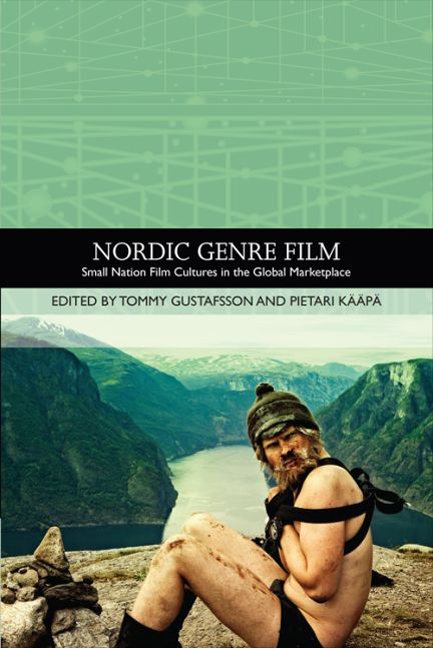Book contents
- Frontmatter
- Contents
- List of Illustrations
- List of Contributors
- Traditions in World Cinema
- Introduction: Nordic Genre Film and Institutional History
- PART I HERITAGE CINEMA AND NATIONAL NARRATIVES
- PART II CRIME AND DETECTIVE NARRATIVES
- PART III NORDIC OPTIMISM: ROAD MOVIES, COMEDIES AND MUSICALS
- 9 Fathers and Sons Reunited: Road Movies as Stories of Generational Continuity
- 10 The Nordic ‘Quirky Feel-Good’
- 11 Contesting Marriage: The Finnish Unromantic Comedy
- 12 Powered by Music: Contemporary Film Musicals, Nordic Style
- PART IV NORDIC HORRORS
- PART V GENRE BENDERS
- Index
10 - The Nordic ‘Quirky Feel-Good’
from PART III - NORDIC OPTIMISM: ROAD MOVIES, COMEDIES AND MUSICALS
Published online by Cambridge University Press: 25 October 2017
- Frontmatter
- Contents
- List of Illustrations
- List of Contributors
- Traditions in World Cinema
- Introduction: Nordic Genre Film and Institutional History
- PART I HERITAGE CINEMA AND NATIONAL NARRATIVES
- PART II CRIME AND DETECTIVE NARRATIVES
- PART III NORDIC OPTIMISM: ROAD MOVIES, COMEDIES AND MUSICALS
- 9 Fathers and Sons Reunited: Road Movies as Stories of Generational Continuity
- 10 The Nordic ‘Quirky Feel-Good’
- 11 Contesting Marriage: The Finnish Unromantic Comedy
- 12 Powered by Music: Contemporary Film Musicals, Nordic Style
- PART IV NORDIC HORRORS
- PART V GENRE BENDERS
- Index
Summary
In this chapter I want to propose the ‘quirky feel-good’ as a particular Nordic film genre. What exactly is meant by the term ‘feel-good’ is poorly defined within film studies, and it is often used to dismiss superficial films that lack intellectual or emotional depth. Yet as Mette Hjort suggests in her booklength study of Lone Scherfig's Italiensk for begyndere (Italian for Beginners, 2000) – itself perhaps the most widely recognised example of what I am calling the Nordic quirky feel-good – a film that makes its viewers feel good does not preclude it from having significant depth (Hjort 2010: 116–17). Hjort proposes the term ‘ethical feel-good’ as a genre delineation for Italian for Beginners, but I think such a term underplays the importance of humour. As I see it, generally speaking a ‘feel-good’ is a film that combines drama with comic effects in order to establish emotional connections between viewers and characters, and among characters, rather than simply to generate laughter or for the purposes of ridicule. A feel-good will thus by definition have an ethos that emphasises emotional connections. Understood in this way, there are clearly many, many feel-good films, both in the US film industry and around the world; films like Jean-Pierre Jeunet's Amélie (2001) and the works of Pedro Almodovar are probably the most prominent quirky examples worldwide. The genre can also be said to encompass the romantic comedy, which is more narrowly focused thematically, privileging heterosexual romance over all other preoccupations as it most often does. Feel-goods more generally can and do concern themselves with a much broader spectrum of human relationships. They also straddle many more traditional categories, such as the coming-of-age film, the road movie, the literary adaptation and even the documentary.
The choice of the modifier ‘quirky’ for the Nordic context is based on my sense that the film industries in the five Nordic countries have actively cultivated a kind of exoticism that is non-erotic; it is a foreignness in relation to the Anglo-American cultural context that emphasises what is perceived to be the strange but charming oddness of Scandinavia rather than the perceived seductive or threatening otherness of more culturally distant societies.
- Type
- Chapter
- Information
- Nordic Genre FilmSmall Nation Film Cultures in the Global Marketplace, pp. 147 - 158Publisher: Edinburgh University PressPrint publication year: 2015



